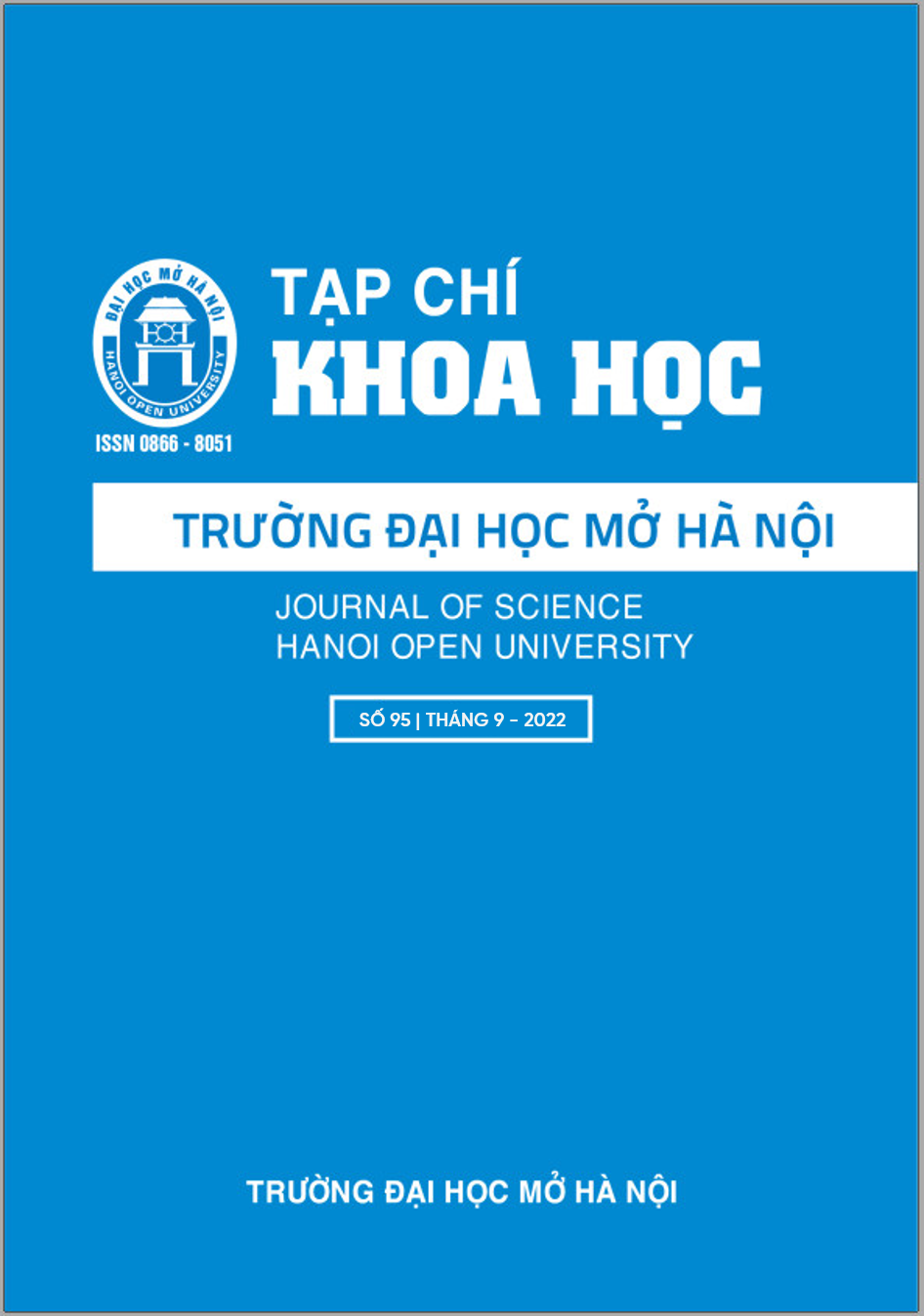ISOLATION AND SELECTION OF ENDOGENOUS BACTERIA THAT ARE ANTAGONISTIC TO THE FUNGUS EXOBASIDIUM VEXANS CAUSING TEA LEAF BLISTER DISEASE
Keywords:
Endogenous bacteria, fungus Exobasidium vexans, tea leavesAbstract
Tea leaf blister disease caused by the fungus Exobasidium vexans damages young leaves and young buds on tea plants. The disease has a rapid spread, seriously affecting the yield and quality of tea buds. The objective of the study was to selectively isolate endogenous bacteria that are antagonistic to the pathogenic fungus Exobasidium vexans as a biological control agent. From 14 isolates of endophytic bacteria in samples of shoots, stems and roots of tea plants, 3 strains of endophytic bacteria Y2.2, Y2.5 and Y2.7 were selected with high antagonistic activity against the pathogenic fungus Exobasidium vexans. (optimal ring diameter from 0.7 to 1.9 cm) under invitro conditions. After 3 days of co-culture of these strains with Exobasidium, the mycelium was broken and gradually failed to grow. The results of sequencing 16S rDNA fragments of two strains of bacteria Y2.2 and Y2.5 showed that strain Y2.2 had 100% similarity with Bacillus subtilis SMY, NCIB 3610 was 100% and strain Y2.5 had a similarity rate. 100% similarity to Burkholderia cepacia
References
[1]. Agnihothrudu, V. A world list of fungi reported on tea (Camellia spp.) Journal of Madras University 34 (1964) 155-217.
[2]. Baby, U.I, Ravichandran, R.,Ganesan, V., Parthiban, R. and Sukumar, S. Effect of blister blight disease on the biochemical and quality constituents of green leaf and CTC tea. Tropical Agiculture (Trinidad) 75(4) (1998)
-456.
[3]. Baby, U.I., Premkumar, R., Ajay, D., Sanjay, R., and Sasidhar,R. Chemical andbiological control of red root disease. Newsletter of UPASI Tea Res.Foundation 14(2) (2004) 1-2.
[4]. Barthakur, B.K., Dutta, P., Sarmah, S.R., Begum, R., Kalita J.N., Singh K. Effect of certain native microbials in controlling diseases of tea. Two and a Bud 49 (2002) 54- 54.
[5]. Carneiro RM, Desouza DG, Belarmino LC. Nematicidal activity of Bacillus spp. strains on juveniles of Meloidogyne javanica. Nematol. Brasileira. 22 (1998)12-21.
[6]. Chen. Z.M. and Chen, X.F. A world list of pathogens reported on tea plant (In Chinese). Journal of Tea Science 9 (1989) 73-88.
[7]. Clay. K,. Fungal endophytes of glasses: a defensive mutual-ism between plants and fungi. Ecology 69 (1988) 10-16.
[8]. Gardener BBM. Ecology of Bacillus and Paenibacillus spp. in agricultural systems.
Phytopathology 94 (2004) 1252–1258
[9]. Hassan MN, Osborn AM, Hafeez FY. Molecular and biochemical characterization of surfactin producing Bacillus species antagonistic to Colletotrichum falcatum went causing sugarcane red rot. African Journal of Microbiology Research 4(20) (2010) 2137-2142.
[10]. Joshi, R., and M.B. Gardener. Identification of genes associated with pathogen inhibition in different strains B. subtilis. Phytopathology 96 (2006) 145-154. [11]. Leclere, V., M. Bechet, A. Adam, J.S.Guez, B. Wathlet, M. Ongena, P. Thonart, F. Gancel, I. Imbert, P. Jacques. Mycosubtilin Overproduction by Bacillus subtilis BBG100 Enhances the Organism’s Antagonistic and Biocontrol Activities. Appl. Environ. Microbiol 71 (8) (2006) 4577-4584.
[12]. Patriquin, D. G., and J. Dobereiner. Light microscopy observations of tetrazolium- reducing bacteria in the endorhizosphere of maize and other grasses in Brazil. Canadian Journal of Microbiology. 24 (1978) 734-742
[13]. Peypoux, F., J.M. Bonmatin, and J. Wallach. Recent trends in the biochemistry of surfactin. App. Microbiol. Biotechnol 51(5) (1999) 553-563.
[14]. Premkumar, R. Report of the plant pathology division. Annual Report of UPASI Tea Res. Foundation. (2001) 32-33 .
[15]. Premkumar, R. Report of the plant pathology division. Annual Report of UPASI Tea Res. Foundation. (2002) 35-36.
[16]. Premkumar, R. Report of the plant pathology division. Annual Report of UPASI Tea Res. Foundation. (2003) 38-39.
[17]. Premkumar,R. and Baby, U.I. Recommendations on the control of root and stem diseases of tea. Handbook of Tea Culture Section (2005) 15/16.
[18]. Zhu YuJing, Chen Lu, Lan JiangLin, Su MingXing, Liu Bo. Isolation, identification and the biocontrol potential of endophyte in Camellia sinensis. Journal of Fujian Agriculture and Forestry University (Natural Science Edition) 38 (2) (2009) 129-134.
